Final stop on the Provençal roadtrip: Uzès, an extremely charming town of about 8,000, more or less straight north of Nîmes. It was born as a Roman settlement, where the Eure springs are the source of the Alzon River. The springs also fed the Roman-built aqueduct taking water to Nîmes, of which the Pont du Gard is the most breathtaking section. Check out my post about the Pont du Gard.
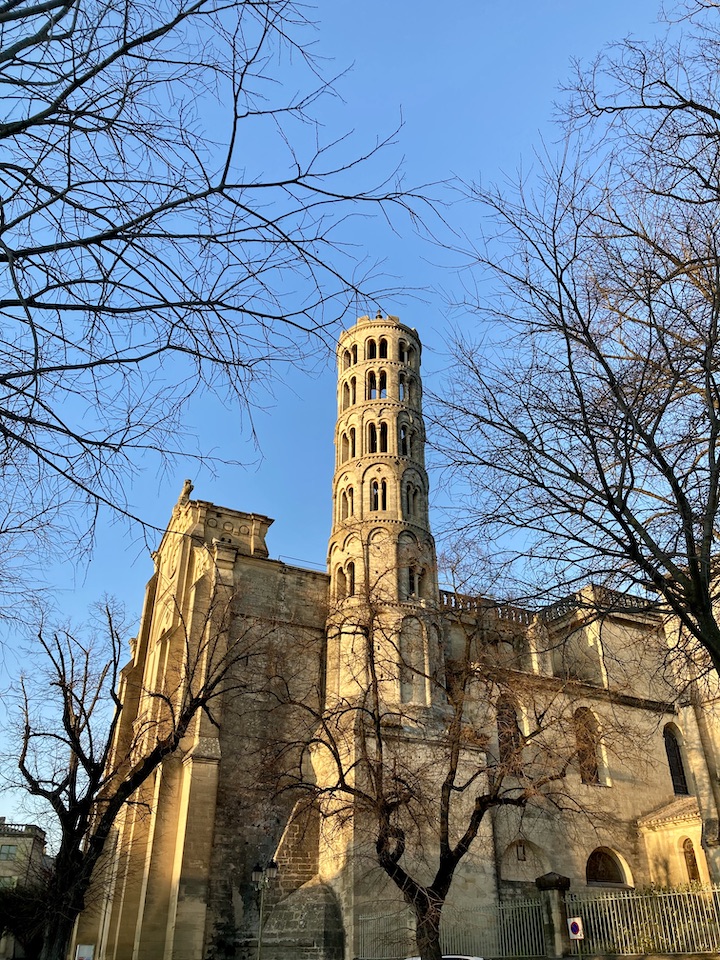

The Romans hung around from the 1st century BCE until Late Antiquity, creating Ucetia, a kind of upscale ex-urb of Nîmes (25 kilometers/16 miles away) for local Roman aristocrats. In the 4th and 5th centuries, Christianity was making a mark, with construction of the Roman-style old Bishop’s Palace. By the 6th century, there were no fewer than five churches, and by the 13th century, Uzès had 193 parishes, one of the biggest dioceses in Languedoc.
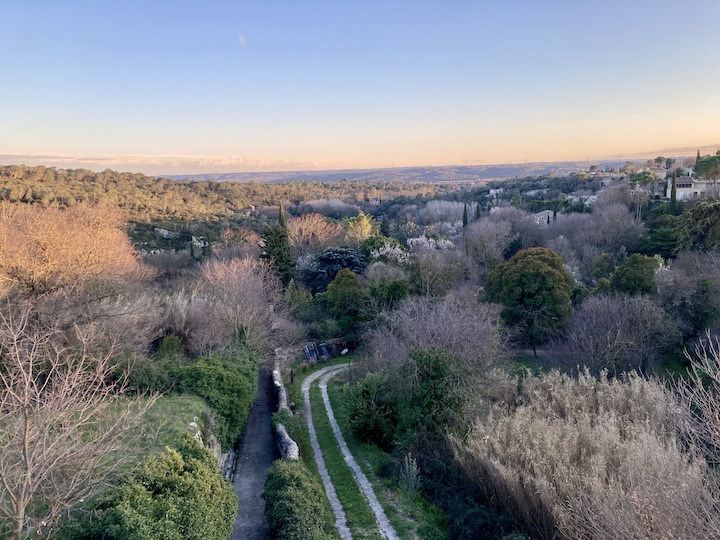
Between the Romans and Charlemagne (late 700s), Uzès and all of the south experienced waves of invaders: the Vandals, then the Visigoths (5th to 6th centuries, in treaties with Rome), followed by the Franks, then the Sarrasins or Muslims in the early to mid-7th century.

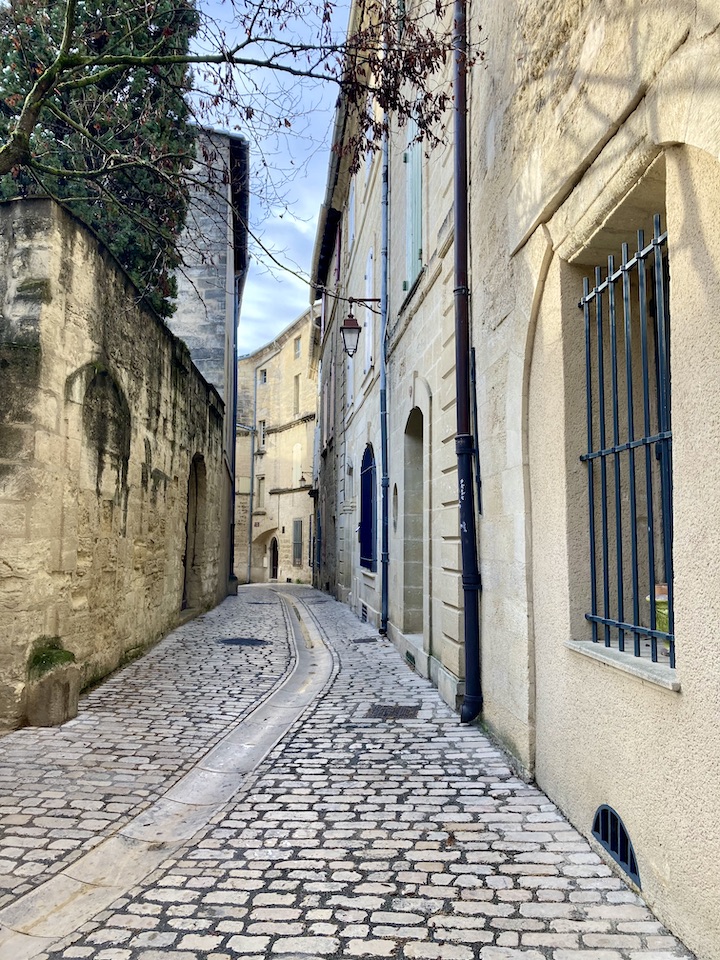
The rise of nobility followed on the heels of that of the church. The Crussol d’Uzès family became the seigneur of Uzès, then viscount, count and finally the first duc (duke) in France in 1632. The ducal palace was built in the mid-1500s on the old Roman encampment. The same family still owns the place, having lost it during the Revolution only to buy it back later. The current duke claims to be 17th in line to the throne, perhaps forgetting that the French cut the head off that idea more than two centuries ago. Tradition is one thing, but the idea that somebody claims to be special because they happened to be born in a certain family is just antithetical to me. And no, I didn’t watch the British coronation or read any of the baloney about it.
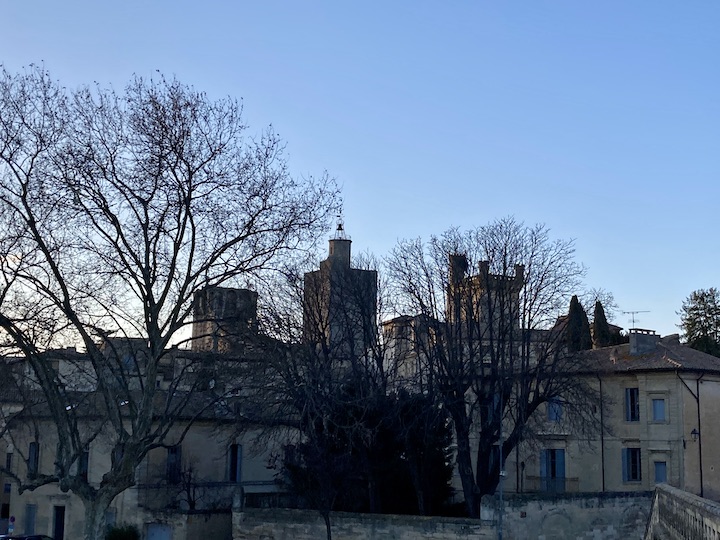

Even before this so-called duke, there was Dhuoda, the wife of the Duke (or maybe just Count, but possibly Marquis) Bernard of Septimanie (the Roman name for the region). Dhuoda was famous for writing a book, a manual for life and morality, for her son between 841 and 843. The book is now at the Nîmes library.
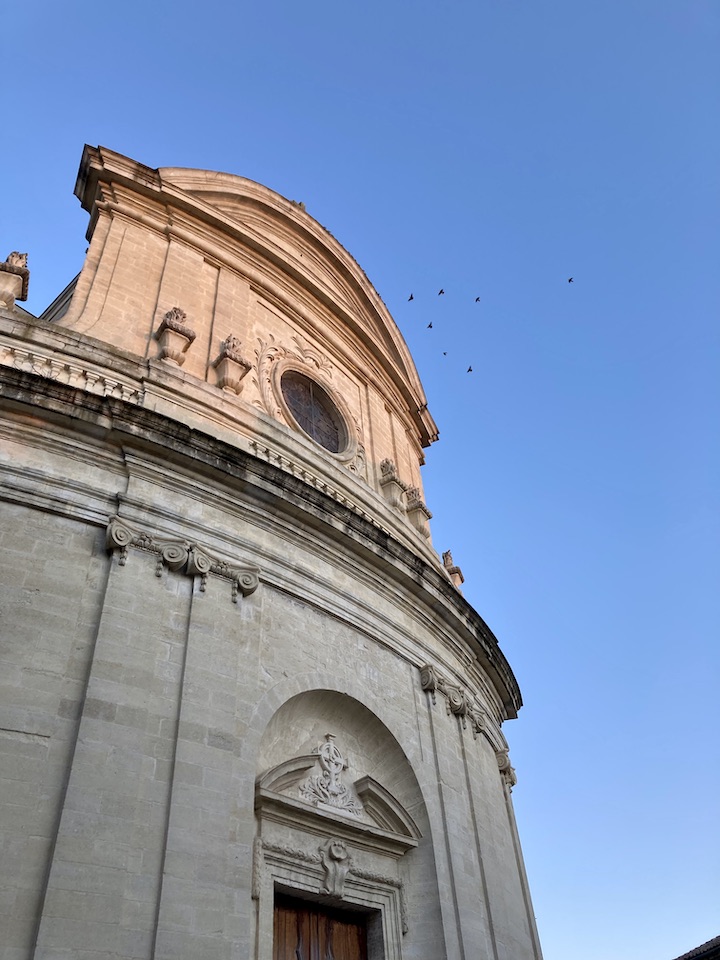
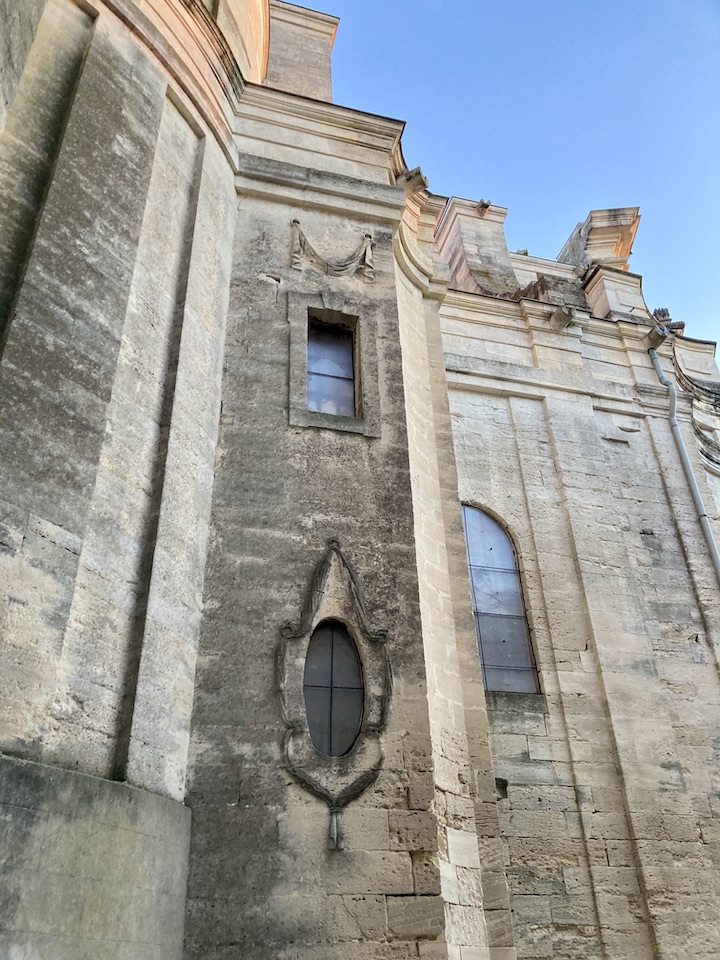
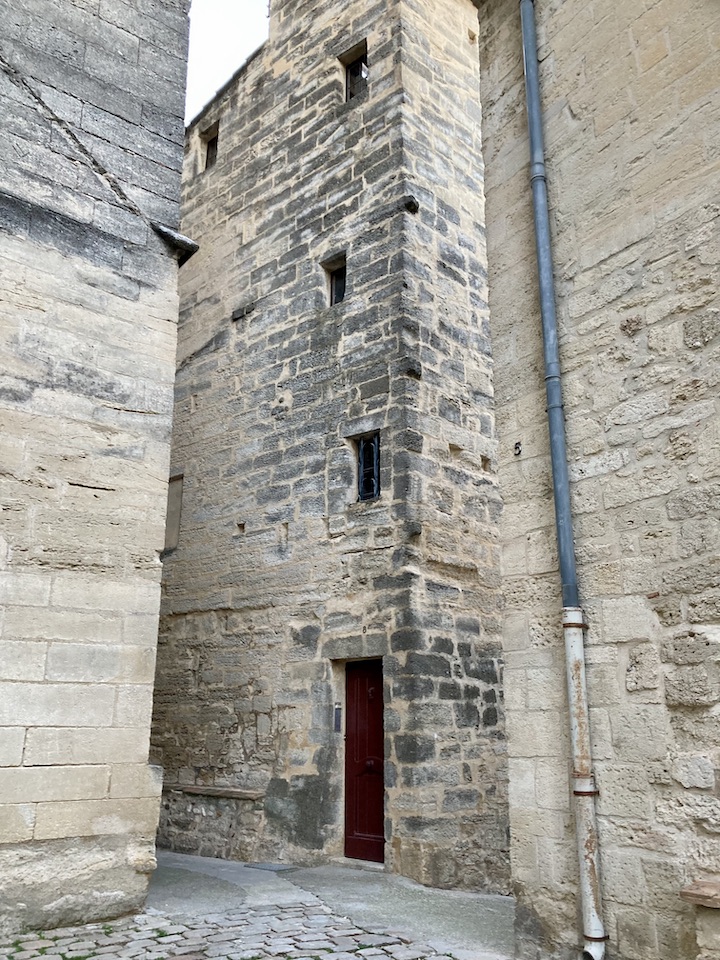
You can visit the ducal palace and the cathedral, but I was there from late Sunday afternoon to Monday morning–not good timing as far as museums or shops or anything. Luckily, the labyrinth streets of Uzès are extremely charming. There even was a dusting of snow in the morning, which was very pretty without being too cold for a trench coat (it was late February).
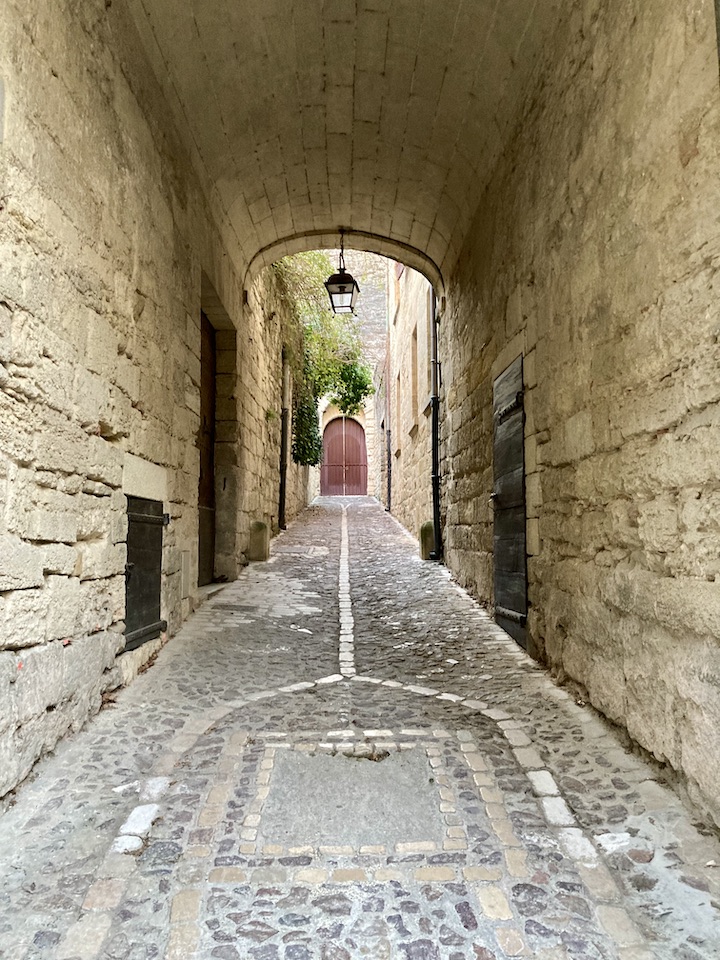
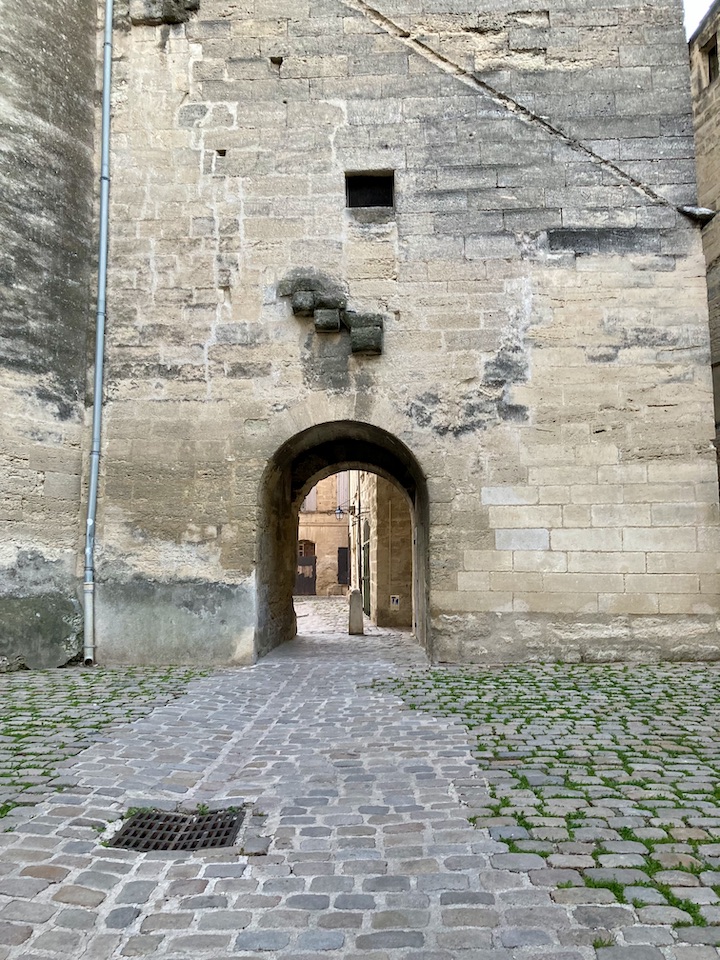
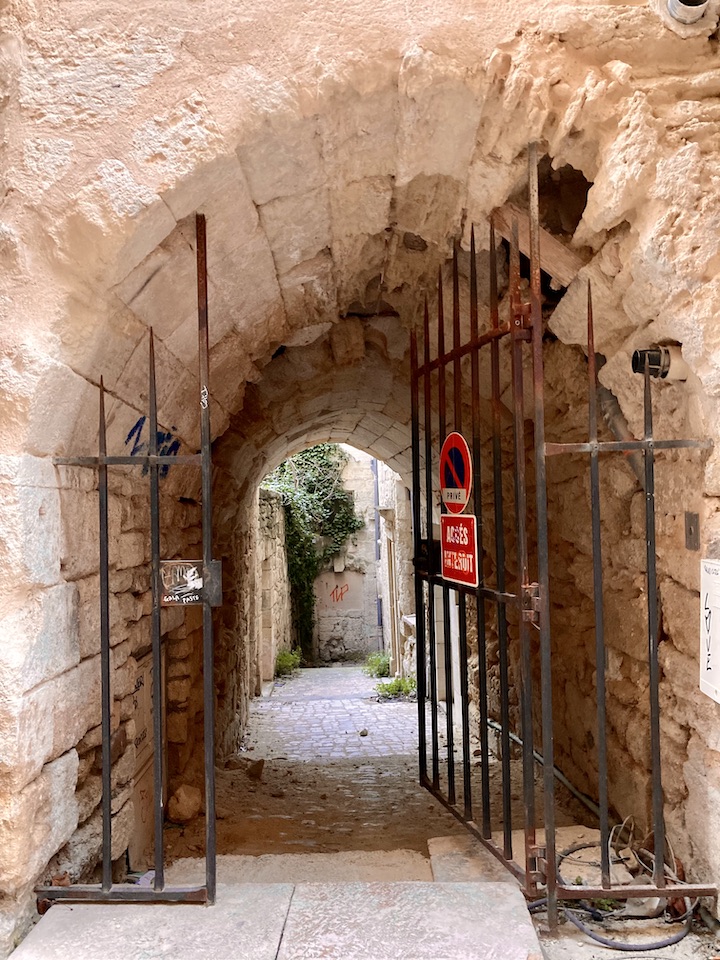

I arrived in time for a gorgeous golden hour for shooting some of the architecture. You can tell Uzès was a well-to-do town since forever, but especially from the 1500s as it became a textile center, like Nîmes (home of denim–de Nîmes). Uzès was known for its serge fabric.
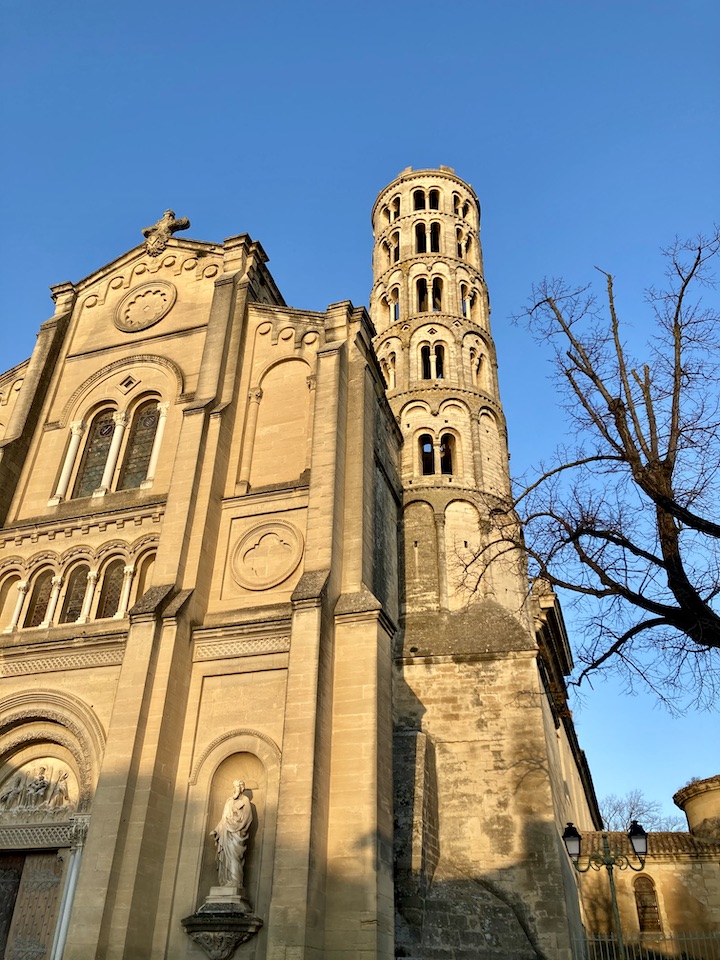
Eventually it was too dark to take pictures. I walked around, inspecting the handful of restaurants that were open on Sunday night. I ended up at Cucina di Luigi, on the boulevard going around the historic center. Delicious and very filling–my pasta with mushrooms was served in a bread bowl, and the bread was too good not to eat some, even though I was stuffed.
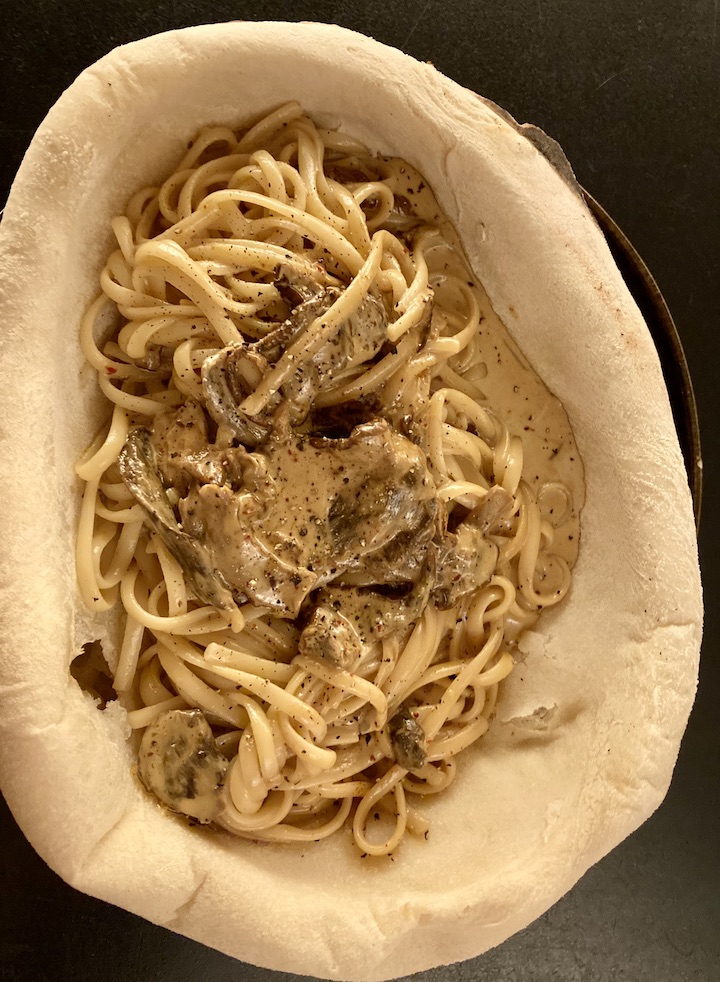
In Uzès, I parked (for free) at the enormous lot near the football stadium and walked about five minutes to my hotel, which was just outside the ring delineating the historic center. The hotel, La Petite Hostellerie, was lovely–charming décor, sleek bathroom, comfortable bed, extremely quiet. Not a problem for me but maybe for others: the stairs from the street to the first floor were steep. Stairs are to be expected in very old buildings. The hosts were friendly and helpful. I would definitely go back. In fact, I have to go back, not on a Sunday, so I can hit the museums and pretty boutiques.
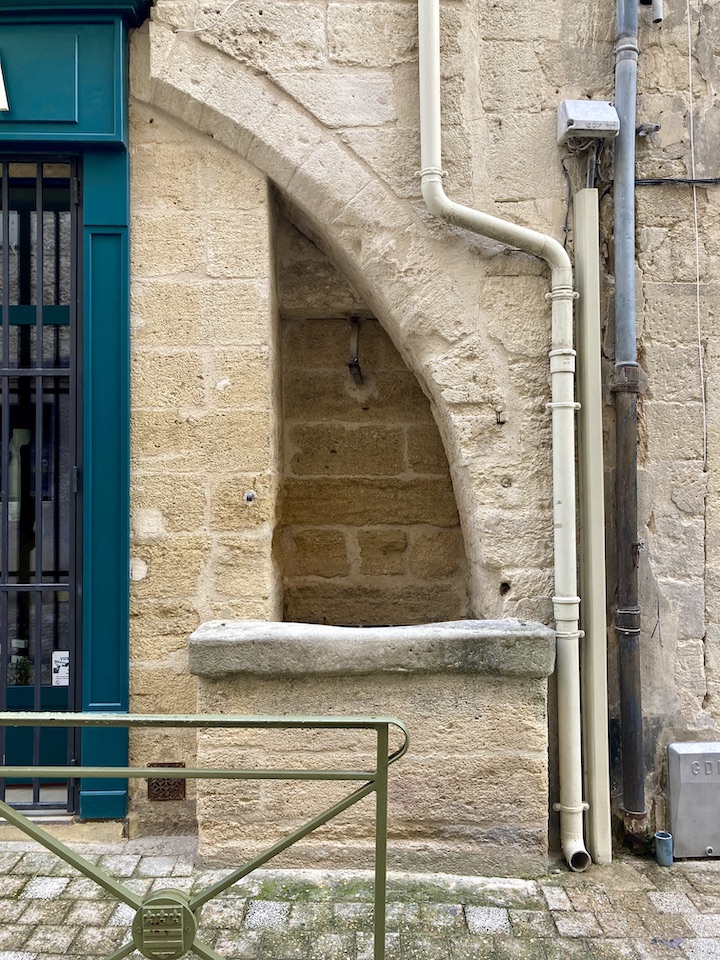
Have you been to Uzès? What did you like most?

Beautiful presentation
How coud you take the pictures whithout
people on Sunday?
its a mistery for me
LikeLiked by 2 people
That’s just it. Sunday is devoted to family dinners in France, and in February, when I was in Uzès, there were very few tourists. So I felt like I had the place to myself. That was nice, but I’d like to see it when it’s livelier, too.
LikeLiked by 1 person
Yes, heaven for arch-lovers, and that mushroom pasta looks divine. Having it all to yourself would almost be worth travelling in February…
LikeLiked by 2 people
Sometimes it’s nice to find yourself alone in an ancient place–you can really imagine the past. But it’s fun, too, to drop into a cute café or to browse a chic boutique. I did find a wonderful café, full of old signs and tools, and plenty of local characters!
LikeLiked by 1 person
It seems like aeons ago that I visited Uzes – I remember it as very pretty and interesting. We were there for the market, which was lovely. Time to go for another visit!! 🙂
LikeLiked by 3 people
Market day is the best day in any French town!
LikeLiked by 2 people
I’ve so enjoyed your roadtrips, Catherine! We stayed in Uzes for a week in a cute little apartment that came with an underground parking spot that exited onto the ring road right by Cucina di Luigi. If you didn’t have claustrophobia driving into that rabbit’s warren called a parking garage, you certainly did by the time you drove out…if you could find the way out!
It’s nice to stay in such a popular spot off season. We had fantastic views from the tower in the Duché all to ourselves, the Saturday morning Marché seemed to be all locals, and we enjoyed seeing all the young families at Sunday morning Mass in the Cathedral. Pont du Gard is an easy day trip. And…the Haribo factory is on the outskirts, where they ply you with free samples! Uzes is the kind of place you never want to leave.
LikeLiked by 3 people
I really liked it. Also love the Pont du Gard. Must avoid Haribo, though!
LikeLike
BEAUTIFUL PHOTOS………….
PASTA IN A BREAD BOWL!NOW I LIKE THAT SOUND OF THAT!
LikeLiked by 2 people
It was too much but it was too delicious.
LikeLike
This has been a wonderful series of travelogues, with beautiful photos and tantalising historical tid-bits. Thank you! I had a look at your Pont du Gard post, too – it’s astonishing the longevity of some of the Roman engineering works in spite of lashing weathering and a couple of world wars, to name just a couple of opportunities for erasure.
I didn’t know the term ex-urb and have absorbed it into my lexicon forthwith!
LikeLiked by 2 people
And, it’s said, the Pont du Gard is on the back of the 5€ note. (Euros are supposed to have typically European architectural features without representing any real places, to make them pan-European rather than “belonging” to any EU member nation.)
LikeLike
Loved all the trees at Place aux Herbes. We happened into it by accident after a very unsuccessful visit at the local tourist office. I’ve never visited an unfriendly tourist office in over 25 years of visiting France so walking into the place with all those beautiful trees really calmed me. It’s a treasure.
LikeLiked by 1 person
It’s so lovely!
LikeLike